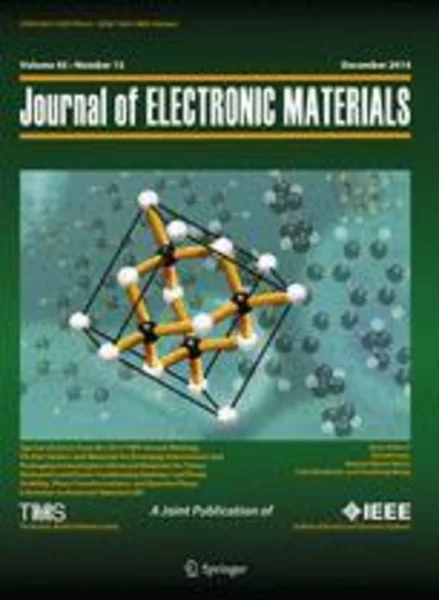-
new perspectives in thermoelectric energy recovery system design optimization
جزئیات بیشتر مقاله- تاریخ ارائه: 1392/07/24
- تاریخ انتشار در تی پی بین: 1392/07/24
- تعداد بازدید: 879
- تعداد پرسش و پاسخ ها: 0
- شماره تماس دبیرخانه رویداد: -
it is highly desirable to develop technologies that recover the large amounts of waste heat generated worldwide in industrial processes, automotive transportation, diesel engine exhaust, military generators, and incinerators to increase fuel efficiency and reduce co2 production and the environmental footprint of these applications. recent work has investigated new thermoelectric (te) materials and systems that can operate at higher performance levels and show a viable pathway to lightweight, small-form-factor, advanced thermoelectric generator (teg) systems to recover waste heat in many of these applications. new te materials include nanocomposite materials such as lead-antimony-silver-telluride (last) and lead-antimony-silver-tin-telluride (lastt) compounds. these new materials have created opportunities for high-performance, segmented-element te devices. new higher-performance te devices segmenting last/lastt materials with bismuth telluride have been designed and fabricated. sectioned teg systems using these new te devices and materials have been designed. integrated heat exchanger/te device system analyses of sectioned te system designs have been performed, creating unique efficiency–power maps that provide better understanding and comparisons of design tradeoffs and nominal and off-nominal system performance conditions. new design perspectives and mathematical foundations in optimization of sectioned te design approaches are discussed that provide insight on how to optimize such sectioned te systems. system performance analyses using ansys® te modeling capabilities have integrated heat exchanger performance models with ansys® te models to extend its analysis capabilities beyond simple constant hot-side and cold-side temperature conditions. analysis results portray external resistance effects, matched load conditions, and maximum power versus maximum efficiency points simultaneously, and show that maximum te power occurs at external resistances slightly greater than the te module internal resistances in these systems. mathematical relationships are given providing the foundation for this phenomenon.
مقالات جدیدترین رویدادها
-
استفاده از تحلیل اهمیت-عملکرد در ارائه الگوی مدیریت خلاقیت سازمانی و ارائه راهکار جهت بهبود
-
بررسی تاثیر ارزش وجوه نقد مازاد بر ساختار سرمایه شرکت های پذیرفته شده در بورس اوراق بهادار تهران
-
بررسی تأثیر سطح افشای ریسک بر قرارداد بدهی شرکت های پذیرفته شده در بورس اوراق بهادار تهران
-
بررسی تأثیر رتبه بندی اعتباری مبتنی بر مدل امتیاز بازار نوظهور بر نقد شوندگی سهام با تأکید بر خصوصی سازی شرکت ها
-
تأثیر آمیخته بازاریابی پوشاک ایرانی بر تصویر ذهنی مشتری پوشاک ایرانی (هاکوپیان)
-
تحلیل پوش آور مخازن بتنی زمینی و تعیین ضریب رفتار ناشی از شکل پذیری
-
توسعه شهری پایدار از ایده تا اجرا
-
تحلیل و بررسی علل بالا بودن تعداد متوفیات و تصادفات در مهرماه در استان آذربایجان غربی و راهکارهای کاهش آن
-
کاربرد مدل سازی اطلاعات ساختمان (bim) در گودبرداری
-
a new methodology for numerical simulation of geothermal down-hole heat exchangers
مقالات جدیدترین ژورنال ها
-
مدیریت و بررسی افسردگی دانش آموزان دختر مقطع متوسطه دوم در دروان کرونا در شهرستان دزفول
-
مدیریت و بررسی خرد سیاسی در اندیشه ی فردوسی در ادب ایران
-
واکاوی و مدیریت توصیفی قلمدان(جاکلیدی)ضریح در موزه آستان قدس رضوی
-
بررسی تاثیر خلاقیت، دانش و انگیزه کارکنان بر پیشنهادات نوآورانه کارکنان ( مورد مطالعه: هتل های 3 و 4 ستاره استان کرمان)
-
بررسی تاثیر کیفیت سیستم های اطلاعاتی بر تصمیم گیری موفق در شرکتهای تولیدی استان اصفهان (مورد مطالعه: مدیران شرکتهای تولیدی استان اصفهان)
-
چسبندگی هزینه، تمرکز مالکیت و ناکارایی سرمایه گذاری در شرکت های پذیرفته شده در بورس اوراق بهادار تهران
-
ارزیابی فاکتورهای مالون دی آلدئید، 8ایزو پروستاگلاندین f2α 8 ، هیدروکسی داکسی گوانوزین و گروه های پروتئین کربونیل به عنوان شاخص های استرس اکسیداتیو در افراد روزه دار در شهر تهران
-
بررسی میزان و نوع رابطه فرهنگ رشته ای با میزان پایبندی به ارزش های اخلاقی علمی در بین دانشجویان (موردمطالعه: دانشجویان دانشگاه ایلام)
-
قاچاق انسان در نظام کیفری جمهوری اسلامی ایران
-
بررسی عوامل اجتماعی موثر بر نگرش دانشجویان به فعالیت های سیاسی در دانشگاه اسلامی واحد بندرعباس




سوال خود را در مورد این مقاله مطرح نمایید :